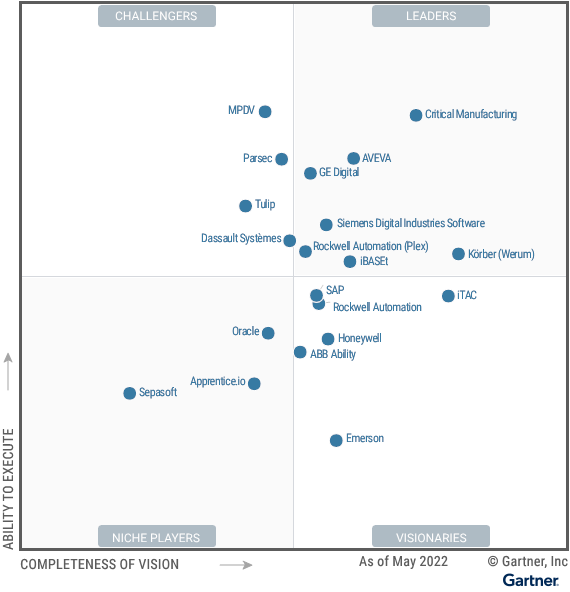“Keep your head down”

Rory McIIroy, Professional Golfer Image Source: DP World Tour
Why Manufacturing Project Managers Need to Think Broader
If you ever played golf, I guarantee, you have been given countless golf tips that may or may not have been useful in improving your golf swing. The number one golf advice is “keep your head down.” If I had a dollar for every time a golfer has hit a bad golf shot and uttered the phrase “keep your head down, stupid!” along with other colorful words, I wouldn’t be rich, but I would have a new set of clubs. Usually, this comes after I have watched them all day long and noticed that their technique and approach to the golf swing would never really allow them to hit a ball well… except maybe by accident. Personally, I have never actually heard a professional golf instructor utter this phrase but simplistically, yes, during the golf swing you should keep your head facing the golf ball until…. Well, the until is where it gets tricky. There are some golf pros on tour who don’t even look at the golf ball when they are hitting it aka Dustin Johnson; however, there are many who do. Predominantly pro golfers are actually rotating their heads back and thru impact. Rory McIlroy, for example, does a great job of tilting the head slightly as the shoulder moves back in the golf swing as he coils. If you watch his swing in slow motion, you will notice the head does much more than stay down. It rotates slightly and it moves downward as he generates power through impact.
Now, I am not writing a golf swing article but only using it as an example to set up my point. Any single piece of advice given for instruction that does not include a full understanding of how that piece of information fits into the overall big picture design, can actually be terrible advice. If Rory only kept his head down, he would miss the fact that his head needs to rotate and allow the head to move as his body coils and recoils. He would contort into all types of terrible, ineffective positions. In fact, the reason why you don’t hear golf professionals say the words “keep your head down” is because they have drills and swing thoughts that incorporate what the head should be doing throughout the golf swing. They are building swing thoughts that are in harmony with the entirety of the golf swing.
Avoiding Application Silos
I believe this is a strong corollary to modern-day manufacturing problem-solving and continuous improvement. Manufacturers are routinely trying to solve individual pain points within their manufacturing operations. They look for a software package that solves just that problem because that is their pain point and the person sponsoring the project may only have the responsibility and authority to make a specific change. For example, if a quality manager is looking to improve quality, they may seek a software company that has a quality solution. Somewhere else in the organization, the maintenance team is looking to improve their ability to track and execute maintenance activities and would look for a maintenance software package. If the operations manager is trying to improve a manual weigh-up activity, then they may ask the controls engineer for a weigh and dispense solution. There really isn’t anyone overseeing how all of these smaller point solutions could be better harmonized with all of the problems facing the manufacturing facility and enterprise. Ultimately over time, these become application silos. These silos often create extreme challenges when the organization decides to move to the next level of maturity, wants to coordinate activities more efficiently across these silos, or needs to start executing business analytics across the plant or enterprise. If you consider the golf swing as an analog to the manufacturing facility, each of these point solutions are equivalent to just one part of the golf swing and they may not harmonize together when considering it as a whole. Companies that have chosen the approach of solving through siloes are now having great difficulty in moving into a more connected and mature enterprise.
Recently, Gartner released its 2022 Magic Quadrant for Manufacturing Execution Systems (MES), and AVEVA’s Model-Driven MES has been recognized as a leader in its ability to execute MES for hybrid-manufacturing systems (manufacturers who have a mix of process and discrete manufacturing systems). AVEVA has the ability to cover the entirety of the manufacturing enterprise and solve problems in harmony without creating siloed data and systems. Although the AVEVA MES is not the least expensive software package, in most cases, if you were to add up the individual cost of the siloed solutions, they would far exceed the cost of a single AVEVA MES implementation. Furthermore, the synergies of a single software solution provide greater efficiencies across the enterprise and offer a recurring return on investment (ROI). Because AVEVA brings the largest portfolio of digital transformation solutions in the marketplace to the table, their product suite will allow organizations to continue to grow into more advanced solutions, gaining further efficiencies and even greater ROI.

2022 Magic Quadrant for Manufacturing Execution Systems (MES)
Setting up the Next Shot
One of the major differences between golf professionals and your average weekend duffer is the ability for the pros to not only make a great shot, but to think multiple shots ahead. In the same way, manufacturing transformation initiatives rely on partners who are constantly innovating. I’ve been impressed with how AVEVA is continually expanding its vision and leading innovation in hybrid cloud manufacturing. With the recent acquisition of the best-in-class enterprise process historian, OSI PI, AVEVA will continue to synergize the intellectual property of now AVEVA PI into its hybrid cloud technology stack and its analytics approach. In the June 2023 timeframe, users of the on-premise Model-Driven MES will be able to leverage AVEVA Data Hub (our cloud-based data management platform) to provide enterprise-wide visualization, analytics, and sharing for MES/MOM data. So, this puts another challenge into the mix when manufacturers are looking for solutions to their problems i.e., where are the technology trends heading? Is the technology we are purchasing today enabling us for the technology of tomorrow? This type of vision and investment in the future is lacking in the low-cost options for MES and SCADA, especially ones that rely heavily on separate partner companies to develop their vision roadmap for them. One low-cost MES solution provider in the marketplace has built their MES solution within an HMI. Imagine trying to run an enterprise-wide MES solution from an HMI, that sounds crazy to me!!
Finding the Right Coach
Every professional golfer has a dedicated coach. PGA Tour golfers are the best golfers in the world, and they still see high value in having an outside person evaluate what they are doing and correct problem areas. If you think of the golf swing as a manufacturing facility, it is important to ensure that adjustments are being made in the context of the entirety of the golf swing. But, if you expand beyond just the golf swing, there are other critical areas of playing golf that also need to address: short game (putting, chipping, pitching) and game management. These are aspects of the game that professional golfers seek outside expertise and coaching. So, if the golf swing is the manufacturing plant, then the totality of the professional golfer’s game that includes the short game and game management would be the manufacturing enterprise. Synergizing manufacturing with the enterprise is another key area that gets missed with solving just manufacturing problems one by one.
At InSource Solutions, we take pride in our ability to not only address a company’s operational technology hurdles but also its operational process hurdles and enterprise integration. When we are brought in for Digital Transformation road mapping, we evaluate the organization against ISA-95, Total Productive Maintenance (TPM), and Lean best practices. Our operational consulting and auditing services identify how well your organization is positioned to adopt new technology into its daily operations. We have seen many situations where technology is brought in and sits on the shelf because, operationally, the organization wasn’t ready to adopt the technology. Often, technology is introduced into a facility and then team members are immediately trained on the technology. This is largely ineffective because it is difficult to become a master with just one lesson. It takes ongoing coaching to help the team evolve into masters of leveraging the technology for the business and driving continued ROI. Imagine taking a week’s worth of golf lessons and then trying to play on the PGA Tour, it won’t happen. Our technology adoption coaches evaluate what the team members are doing well and give instruction on what can be done to continually improve. Companies that try to do this on their own, tend to not have great success because everyone within the manufacturing facility is already busy and doesn’t have the time to train and work alongside hundreds of team members. Manufacturers who are leaders in adopting new technology and getting the ROI promised, use our adoption coaching because they realize they don’t have the bandwidth to do a great job while simultaneously coming up to speed on the technology themselves.
To wrap it up, don’t keep your head down when navigating your manufacturing digital footprint. Look for big picture solutions that solve problems in harmony with the organization and future technology trends. InSource and AVEVA has solutions that can harmonize your facility and enterprise and put you on the leaderboard.